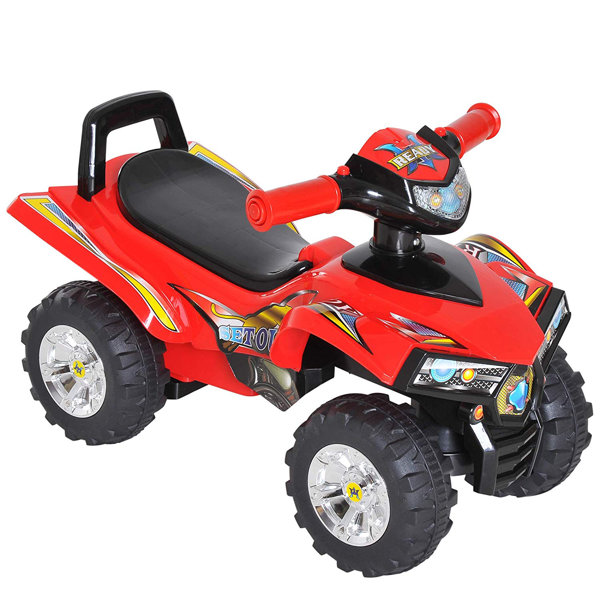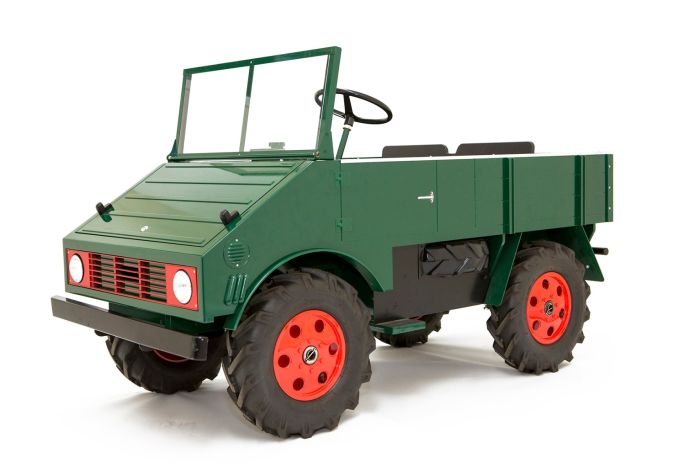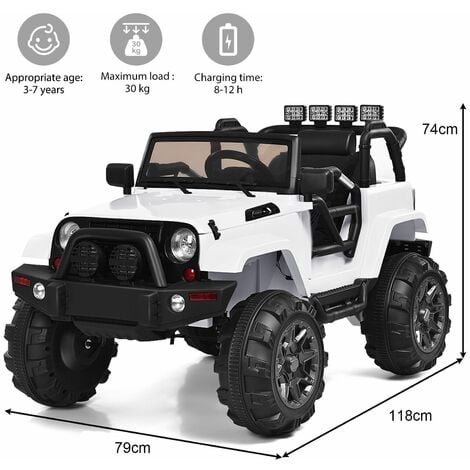Good News To Picking Ride On Toys
Wiki Article
What Are The Things To Look For When You Purchase An Ride-On Car For Toddlers?
Be aware of the following aspects when buying a ride-on vehicle for your child: age size, size, and developmental stage. All of these are crucial in ensuring that it is suitable and safe for your child. What factors should be considered when evaluating these aspects - Age
Younger Toddlers (1-3 years old) - For younger toddlers choose ride-on vehicles that are specifically designed for the age range they are in. These cars are usually lower than the ground and with simple controls and features like steering wheels or buttons. Ride-on vehicles with a wide base will provide stability and decrease the chance of them tipping.
Children who are older (3+ Years) If your child ages, he or she will be able operate more advanced vehicles with additional options and control. Consider buying cars with seats that can be adjusted, bigger capacity for weight, or with interactive features such as music, sound effects, or working lights. For safety, search for cars with the ability to adjust speed or parental controls to accommodate different skill-levels.
Size -
Height and weight - When selecting the right ride-on, it is important to think about your child's size and weight. Select a car that has the weight and height that is comfortable for your child. Avoid cars too big or small. They could be uncomfortable and unsafe.
Legroom and Comfort - Ensure that the car you ride in has plenty of legroom and room for your child to comfortably sit. Check that the seat area is suitable for your child.
Developmental Stage
Motor Skills: When deciding on the ride-on vehicle for your child make sure you consider your child's coordination skills and their motor abilities. Littler toddlers might require simpler controls and features to navigate and navigate, while older children are able to handle more complex controls and features with interactive capabilities.
Confidence and Independence Ride-on vehicles can to build confidence and independence in children, as they develop the ability to control and navigate their own vehicle. Pick a car for your child which allows them to learn to steer and brake, improving their motor skills.
When selecting a ride-on car be sure to consider your child's needs and the interests of your child. Pick a car with themes and colors or features that appeal to your child's interests, regardless of whether it's a vintage car or a sports car trucks, or a themed character vehicle.
If you consider your child's age as well as their height and developmental stage, you will be able to choose an appropriate, safe ride-on that your child can enjoy and take lessons from. View the best Lamborghini kids car for blog tips including childs ride on car, childrens ride on, remote control childrens electric cars, ride ons, toy cars, remote control childrens electric cars, car electric ride on, toy car toy car, toy cars toy car, childs ride on car and more. .

What Is The Difference Between Indoor And Outdoor Versions Of Children's Vehicles Designed?
Outdoors or indoors, children' cars are designed to function in a variety of circumstances and in different environments. The indoor Use Cars differ from the Outdoor Use Cars.
Weight and size The majority of indoor cars are smaller and lighter in order for them to be tucked away in tight spaces such as living rooms, bedrooms, and hallways. These vehicles are compact and compact, which allows them to maneuver easily around narrow passageways or corners.
Low Ground Clearance for Indoor Use vehicles have a low clearances to avoid getting stuck or snagged on obstacles such as carpets, rugs or thresholds. This enables the vehicle to move smoothly and without interruption over indoor surfaces without chance of getting stuck or falling over.
Smooth Wheels - The wheels on indoor cars are often comprised of smooth substances such as plastic or rubber to offer traction and grip on smooth surfaces like hardwood floors, laminate flooring or tiles. They are made to block out sound and prevent scratching of indoor surfaces.
The limited speed of cars used for indoor use usually have reduced maximum speeds in order to provide that they are safe and controlled in restricted spaces. This can help to prevent accidents and collisions with furniture, walls, or other objects that are found in indoor areas.
Outdoor Use Cars -
Durable Construction – Cars specifically designed for outdoor use are built with robust materials. These include robust plastics and metals that are able to withstand the harsh elements outside, such sunlight, humidity and temperature fluctuations. These cars are built to withstand the harsh conditions of outdoor usage.
Higher Ground Clearance - For outdoor use, vehicles have greater ground clearance to maneuver through bumps, uneven terrain or obstacles found in the outdoors. They can navigate rough terrains such as gravel, asphalt grass, dirt, or grass without getting stuck or harmed.
Traction Tires - The tires of cars that are designed for outdoor use are typically fitted with treads or patterns to improve grip and traction on uneven or slippery surfaces. This allows for better control and stability when driving on uneven terrain.
Weather Resistance - For outdoor use, cars can feature components that are resistant to moisture or environmental damage, such as waterproof casings, sealed electronics and even waterproofed ones. They are able to stand up to water, rain, or puddles while maintaining performance.
Higher Speed - Outdoor use cars usually feature higher speeds in order to make room for open spaces as well as longer distances that are often encountered in outdoor environments. It provides an exhilarating adventure for kids who want to explore outdoor spaces.
When considering these design features and other features, parents may choose a children's car that best fits their requirements and the setting in which they will use it, whether inside or outside. They can then ensure your child's safety, fun, and lasting experience. Check out the top go here for Mercedes ride on car for site recommendations including childrens digger, pedal car, car on ride, cars pedal car, toy and car, childrens ride on, electric two seater cars, remote control childrens electric cars, electric rideons, electric ride on and more. .

What Should I Think About Before Buying An Electric Kid's Car? What Are The Advantages?
There are many things to think about before buying an electric car for your child. Consider these key elements, such as information on the cost, size, pros, cons, and more.
When choosing an electric car for your child, take into consideration the size and the age of your child. For younger and smaller children smaller and lighter models are often the best choice. However older or larger kids may need cars that have more space to accommodate them.
Car Weight and Size -
Electric cars for kids come in a variety of dimensions. The range of sizes is from small replicas to large-scale replicas. The weight and size should be considered according to your child’s age, height, and strength. Also, think about space for storage or playing.
Price Variation Price Range
The price of electric cars for kids can vary according to a myriad of factors including size, brand and quality. Prices range from $50-200 for micro-sized replicas, while higher-end licensed replicas cost $200-800.
The Pros and Cons of -
Pros -
Electronic Kids' Cars These vehicles are perfect for entertainment and imaginative games. Kids can experience the thrill of having their own vehicle.
Motor Skill Development. Operating an electric vehicle helps children develop coordination spatial awareness, as well as fine motor skills.
Electric automobiles encourage physical activity and outdoor playing. They promote exercise and exploration.
Realistic Details - Many electric children's vehicles come with real details like working headlights, MP3 player compatibility, and horn noises. These features improve the experience of playing.
Cons
Cost - The best electric children cars can be costly, especially licensed replicas of well-known car brands.
Battery Life - Electric cars rely on rechargeable batteries for power, which might have a limited time of operation and require frequent recharging.
Safety Risks - Electric vehicles may pose safety concerns such as falls, collisions, and entrapment, if not handled with caution and under adult supervision.
Assembly and Maintenance - Some electric cars require assembly upon arrival and maintenance on a regular basis, including cleaning, battery care and occasionally repairs or replacements.
Accessories and features -
Take note of the features and accessories included in the electric children's car like functioning headlights, horn sounds, parental remote control, seat belts, and storage compartments. Choose a car that comes with the features and accessories that match with the preferences of your child.
Ultimately, the best electric car for your child will depend on factors such as age, size, interests, and your budget. Make sure you research and compare models review them, and weigh up the pros & cons before making a choice. Follow the top rated kids cars kidscars.co.uk advice for more tips including childs ride on car, car on ride, ride electric car, digger ride, toy toy cars, electric ride on, ride on car, electric rideons, electric ride on cars, kidscars and more. .
